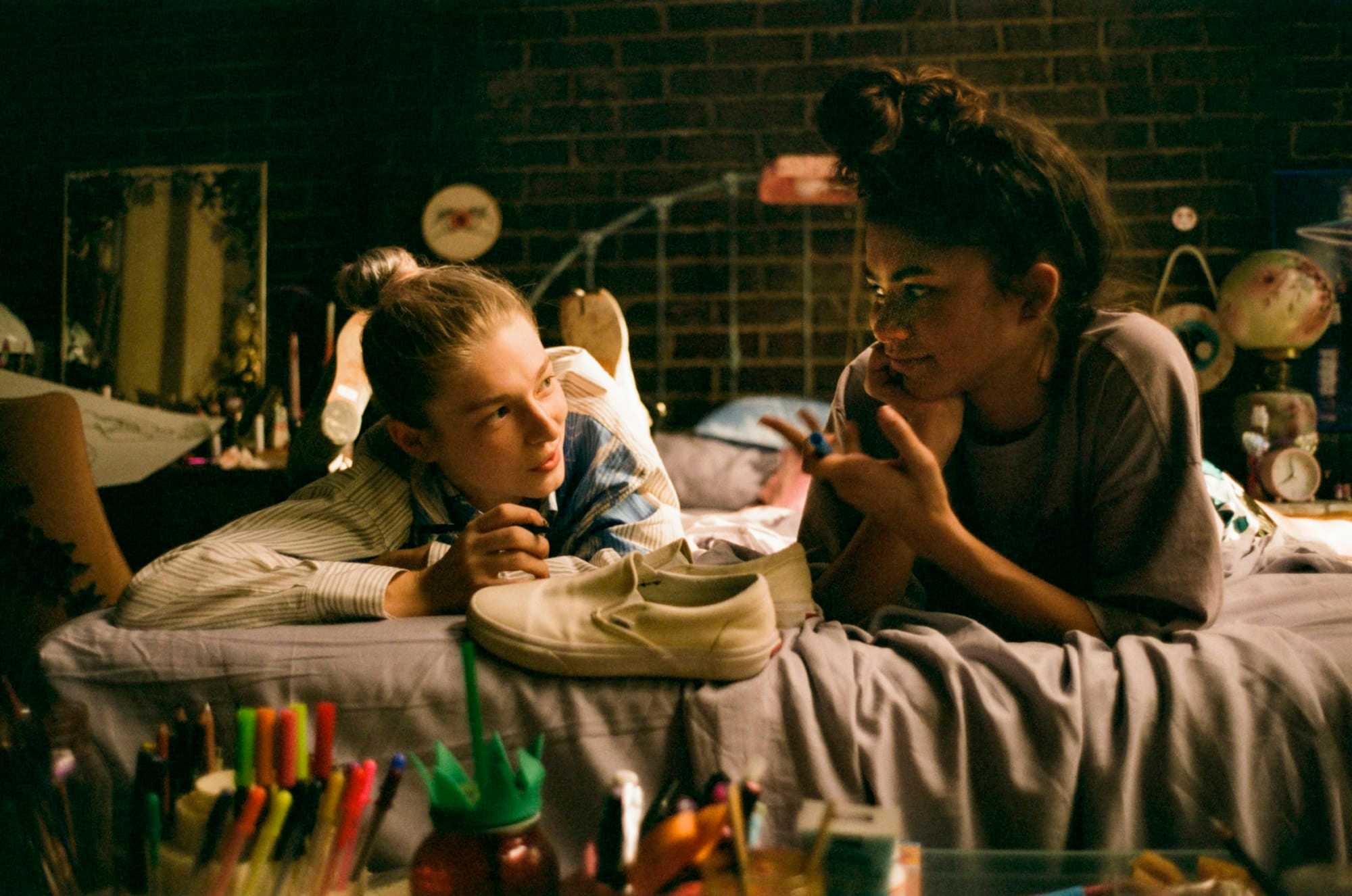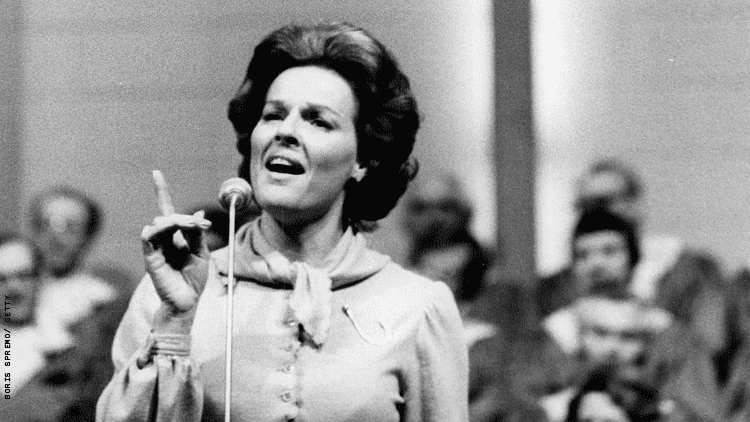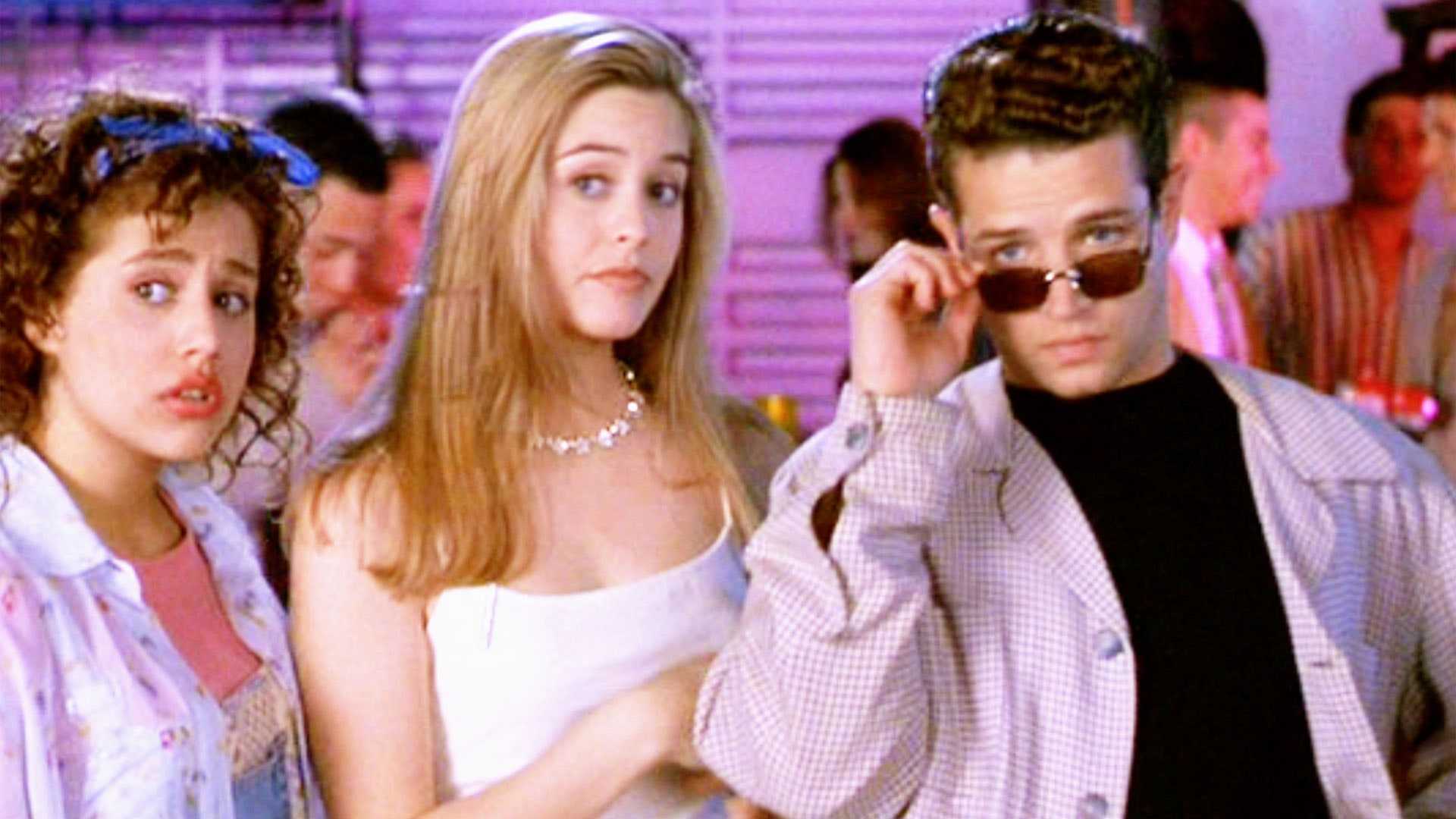Representation Matters: A Brief History of Queer Youth in Media
Pride Month 2021 was a good time to be a young LGBTQ+ person, at least on TV and the various streaming apps. Hulu premiered season 2 of Love, Victor, a spinoff of the hit film Love, Simon about a gay teenager navigating high school in wealthy suburban Atlanta. HBO Max released new episodes of Generation, a sitcom about a multiracial group of queer youths in Los Angeles. And HBO also dropped the trailer for the much-anticipated, pandemic-delayed second season of its other show about multiracial queer youths in Los Angeles, the massive hit Euphoria. Weeks after Pride Month ended, there was the debut of the new Gossip Girl, which followed tradition of other recent reboots of millennial nostalgia properties (such as Peacock’s Saved By the Bell reboot and Netflix’s recent updates of The Baby-Sitters’ Club and She-Ra) by adding queer characters to the mix. In general, queer youth have never been better represented in popular culture. Portrayals of LGBTQ+ young people, and of queer-inclusive storylines aimed at young viewers, run the gamut from dark and gritty teen shows like Euphoria to children’s cartoons such such as Steven Universe. But at the same time, in the real world, it is a much scarier time to be a young LGBTQ+ person. States such as Tennessee and Arizona are passing new laws meant to restrict even mentioning LGBTQ+ topics in school. Dozens of states have considered or passed laws banning LGBTQ+ kids from participating in school sports. And states such as Arkansas are trying to ban gender-affirming youth for trans young people altogether. All told, 2021 saw more anti-LGBTQ+ laws proposed or passed in state legislatures across the country than any other year in recent memory. And many of these laws particularly target queer youth. The growing visibility of LGBTQ+ youth in popular culture and growing attacks on LGBTQ+ youth in state legislatures are closely related. Much of the rhetoric of anti-LGBTQ+ politicians is premised on erasing queer youth from existence. This is a strategy that goes back to the godmother of the anti-LGBTQ+ movement, Anita Bryant.
Weeks after Pride Month ended, there was the debut of the new Gossip Girl, which followed tradition of other recent reboots of millennial nostalgia properties (such as Peacock’s Saved By the Bell reboot and Netflix’s recent updates of The Baby-Sitters’ Club and She-Ra) by adding queer characters to the mix.
In general, queer youth have never been better represented in popular culture. Portrayals of LGBTQ+ young people, and of queer-inclusive storylines aimed at young viewers, run the gamut from dark and gritty teen shows like Euphoria to children’s cartoons such such as Steven Universe.
But at the same time, in the real world, it is a much scarier time to be a young LGBTQ+ person. States such as Tennessee and Arizona are passing new laws meant to restrict even mentioning LGBTQ+ topics in school. Dozens of states have considered or passed laws banning LGBTQ+ kids from participating in school sports. And states such as Arkansas are trying to ban gender-affirming youth for trans young people altogether.
All told, 2021 saw more anti-LGBTQ+ laws proposed or passed in state legislatures across the country than any other year in recent memory. And many of these laws particularly target queer youth.
The growing visibility of LGBTQ+ youth in popular culture and growing attacks on LGBTQ+ youth in state legislatures are closely related. Much of the rhetoric of anti-LGBTQ+ politicians is premised on erasing queer youth from existence. This is a strategy that goes back to the godmother of the anti-LGBTQ+ movement, Anita Bryant.
I’m Here to Recruit You
If you know anything about queer history, you are probably familiar with Anita Bryant, the Miss America-turned-orange juice spokeswoman who became the fact of anti-LGBTQ+ bigotry in the 1970s. After the turning point of the Stonewall Riots led to a burst of organizing for what were then referred to as “gay rights” in the early to mid-70s, Bryant became the face of the backlash when she successfully led a campaign to overturn pro-gay civil rights ordinance in Miami in 1977.
Bryant founded the first political organization dedicated to preventing equal rights for queer people. And it was called, crucially, Save Our Children. In her most notorious statement, Bryant laid out why protecting kids required denying people the right to not be fired or evicted from their home for being gay:
"As a mother, I know that homosexuals cannot biologically reproduce children; therefore, they must recruit our children."
This line has been mocked many times, for obvious reasons, but at its core is an important and nasty idea that fuels so much anti-LGBTQ+ rhetoric. The “our children” she refers to are presumed to be straight (and while not widely discussed at the time, cisgender) and could only be made not straight through “recruitment” by evil homosexuals. Queer youth, according to Bryant, do not exist.
Many of the mainstream media who reported on Bryant at the time, and even historians who write about her now, seem to miss this important point about her rhetoric. But one person who did not miss it was her main nemesis Harvey Milk. At the time of Bryant’s first campaigns in 1977, Milk was in the middle of his run for a seat on the San Francisco Board of Supervisors and he helped harness gay anger at Bryant to help secure his historic victory that November.
The following year, Bryant and Milk would go head-to-head when Bryant teamed with a California legislator named John Briggs to put Proposition 6, otherwise known as the Briggs Initiative, on the California ballot that November. This initiative, if passed, would require school districts to fire any teachers known or suspected to be gay, further promoting Bryant’s idea that gays were a danger to children and trying to “recruit” them into the “gay lifestyle.”
In response to Bryant, Milk began starting his speeches with what would become his catchphrase: “My name is Harvey Milk and I’m here to recruit you.” In this, he obviously mocking Bryant’s overblown fear-mongering, but there was more happening. Because in his speeches, he was recruiting people. He was recruiting closeted queer people to come out and show their friends, family, and coworkers and show them that someone they love is gay. He was recruiting straight allies to stand up for what is right.
And he was recruiting the queer people of the Castro District, most of whom had moved there to escape hometowns where they felt like the only queer person in the world to live in a place with people like them, to fight for the queer youth still stuck in those hometowns. He was acknowledging the existence of those queer kids Bryant refused to admit the existence of and making clear the damage her rhetoric was having on them. As he put it in his famous “Hope Speech” at the 1978 San Francisco Gay Freedom Day parade:
And the young gay people who are coming out and hear Anita Bryant on television and her story. The only thing they have to look forward to is hope. And you have to give them hope. Hope for a better world, hope for a better tomorrow, hope for a better place to come to if the pressures at home are too great. Hope that all will be all right.
Teenage Apocalypse
Largely thanks to the success of Bryant’s messaging, queer youth were rendered essentially invisible in popular culture and political discussions for decades. LGBTQ+ organizations were often hesitant to deal with issues related to youth, for fear of being accused of “recruiting” children. And LGBTQ+ youth were largely absent from popular culture.
For example, the 1990s featured several big breakthrough moments in queer representation (Ellen’s coming out, a lesbian wedding on Friends), but they almost always featured queer adults, not young people. In this context, the character of Christian, the “disco-dancing, Oscar Wilde-reading, Streisand-ticket holding Friend of Dorothy” in Amy Heckerling’s 90s teen classic Clueless is the exception that proves the rule. Christian is the rare queer teenager in a mainstream teen film of the time, but his mere presence as an out gay teen is used mostly as a joke and a way to signify the cultural sophistication of the wealthy Beverly Hills high school where the film was set.
The 90s, though, did start to present some representations of queer teens, if you knew where to look. If an enterprising queer teenager explored the furthest nether regions of their local Blockbuster video, they could find indie films like Jamie Babbit’s But I’m a Cheerleader or Greg Araki’s Teenage Apocalypse Trilogy (Totally F****d Up, The Doom Generation, and Nowhere). But the relative obscurity of these films only served to highlight the overall lack of representation.
The 2000s were not much better. Queer storylines were occasionally trotted out as attention-grabbing stunts (such as Marissa Cooper’s brief bicurious phase with guest star Olivia Wilde in season 2 of The O.C.) and there were interesting representations happening at the margins (such as Araki’s award-winning Kaboom!). But for the most part, queer young people did not exist in mainstream popular culture.
The Ryan Murphy Revolution
And then came a little show called Glee. Premiering in the summer of 2009, Ryan Murphy’s teen drama/comedy/musical mashup was a runaway hit and cultural phenomenon which in many ways set the stage for the next decade of queer youth representation. Queer characters such as Kurt Hummel (Chris Colfer) and Santana Lopez (Naya Rivera) were not only present from the show’s first episode but allowed to portray the full range of emotions and experiences of a queer young person: coming out, falling in love, losing their virginity, getting married.
The success of Glee marked a sea change in queer young people in all corners of popular culture. The year after Glee premiered, the soapy teen mystery series Pretty Little Liars featured a lesbian main character, Emily Fields (Shay Mitchell). By the end of the decade, as the Gossip Girl reboot demonstrates, queer characters would become nearly required for teen shows.
Meanwhile, in music, queer stars such as Hayley Kiyoko, Troye Sivan, and King Princess would become major stars in the 2010s. In movies, Love, Simon received a lot of press attention as the first mainstream teen film to feature a queer protagonist when it premiered in 2018. But a year later, when Olivia Wilde’s teen comedy Booksmart featured a lesbian main character, most people barely noticed.
And representation of queer youth has trickled down from teens to even younger kids, with animated shows such as Steven Universe, kids books such as This Day in June and Julian is a Mermaid, and Drag Queen Story Hour events happening at libraries and bookstores across the country and the world. (Full disclosure: I am a founder of Drag Story Hour Arizona and sit on the board of directors of Drag Queen Story Hour, our international parent organization).
So it is important to understand how these recent attacks on LGBTQ+ (and especially trans) young people are closely related to increasing visibility. For decades, anti-LGBTQ+ forces have tried to pretend that queer young people do not exist, and people are only made queer or trans through the pernicious influence of evil adults. Acknowledging that queer and trans young people do exist, always have existed, and always will exist would expose their rhetoric for the hollow bigotry that it is.
In the last decade, LGBTQ+ young people have had more opportunity than ever to see experiences like theirs represented in movies, TV, music, and more. This has empowered a generation to take pride in their queer identities from a young age, instead of spending years filled with shame and self-doubt. And it is that pride and empowerment of young people that terrifies the bigots.
Special Announcement
If you enjoyed this post and want to learn more about LGBTQ+ youth in pop culture and politics, we have a special announcement. This fall, QueerLand and Arizona State University professor David Boyles are collaborating on an exciting new project!!!
This fall at ASU, Professor Boyles will be offering his class “Speaking OUT: LGBTQ+ Youth in Pop Culture and Politics.” This class is typically only open to first-year students in the ASU College of Liberal Arts & Sciences. But this semester, Professor Boyles will be offering a special online open-access version of the class for QueerLand Patreon supports at the $10/month level and above. The course will begin August 16 and run through December 5.
If you become a supporter, you will be able to take this course with Professor Boyles. We will follow the same syllabus as Professor Boyles’ ASU students, which involves weekly assignments of reading and viewing. We will engage with texts about and for LGBTQ+ youth such as Booksmart, Euphoria, Steven Universe, Moonlight, Paris is Burning and many more. We will read about and discuss how these pop culture texts interact with current discussions of issues affecting LGBTQ+ youth including coming out, conversion therapy, sex education, and the current legislative attacks on trans youth.
Participants in the course will have access to:
- Weekly video mini-lectures from Professor Boyles
- A class Discord server where we will have weekly discussions of the assignments
- Biweekly Zoom discussions
- An end-of semester Zoom open house in which participants will have the opportunity to share the work they created over the course of the semester.
Head to https://www.patreon.com/QueerLand to become a supporter today and get access to this amazing learning opportunity!!
About the Author
David Boyles (he/him) teaches writing at Arizona State University. He is a co-founder and current President of Drag Story Hour Arizona and also sits on the Board of Directors of the national Drag Queen Story Hour organization. Since its founding in 2019, Drag Story Hour Arizona has presented queer-inclusive family story hours hosted by drag performers at libraries, bookstores, museums, and colleges around Arizona. In 2020, David co-founded Virtual Arizona Pride, which has been presenting virtual programming for the Arizona LGBTQ+ community for the past year in order to fill the gap created by cancellation of in-person Pride events. He is passionate about supporting queer youth and creating spaces where youth can celebrate their identities and learn about queer art, culture, and history.


